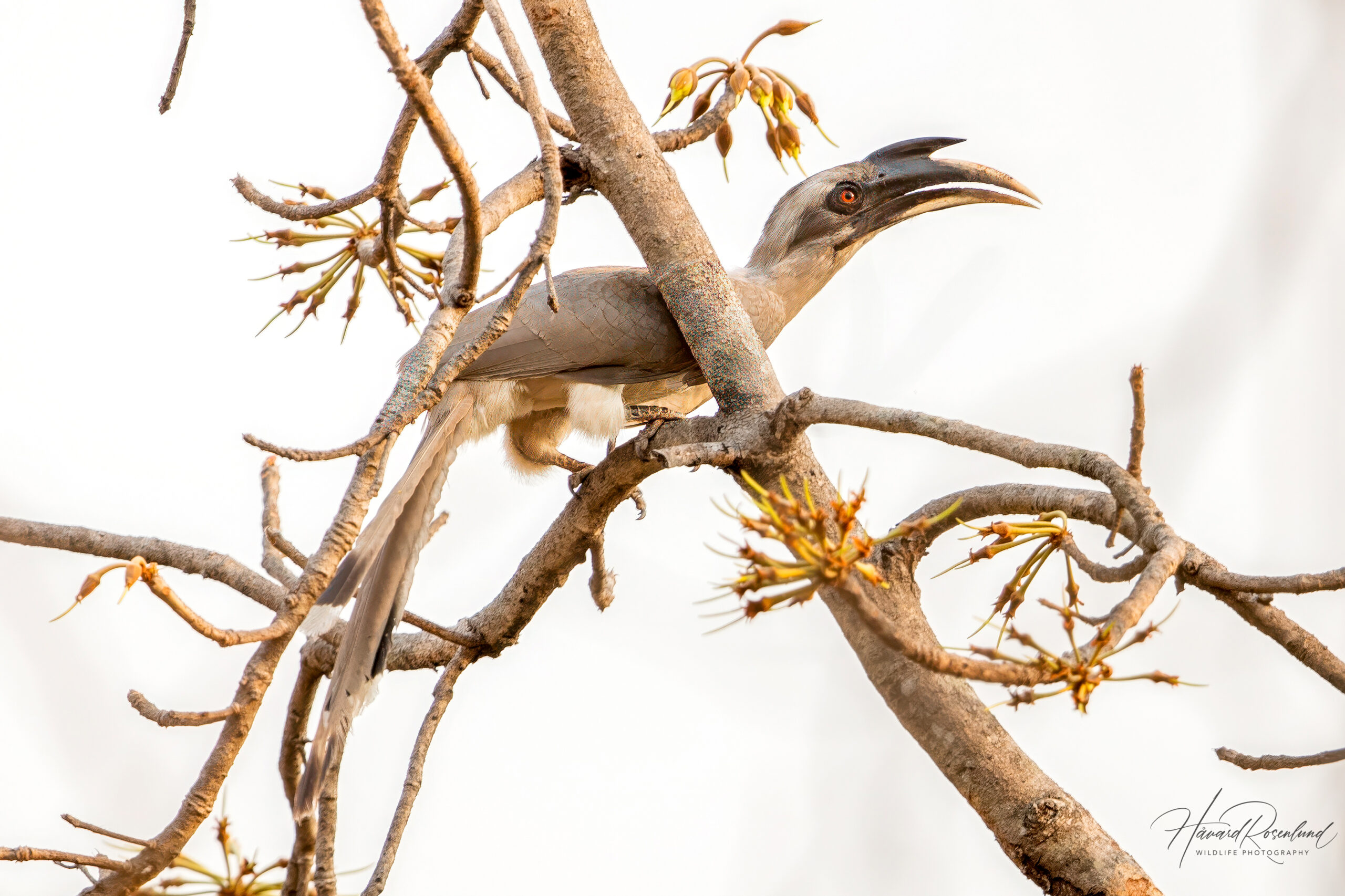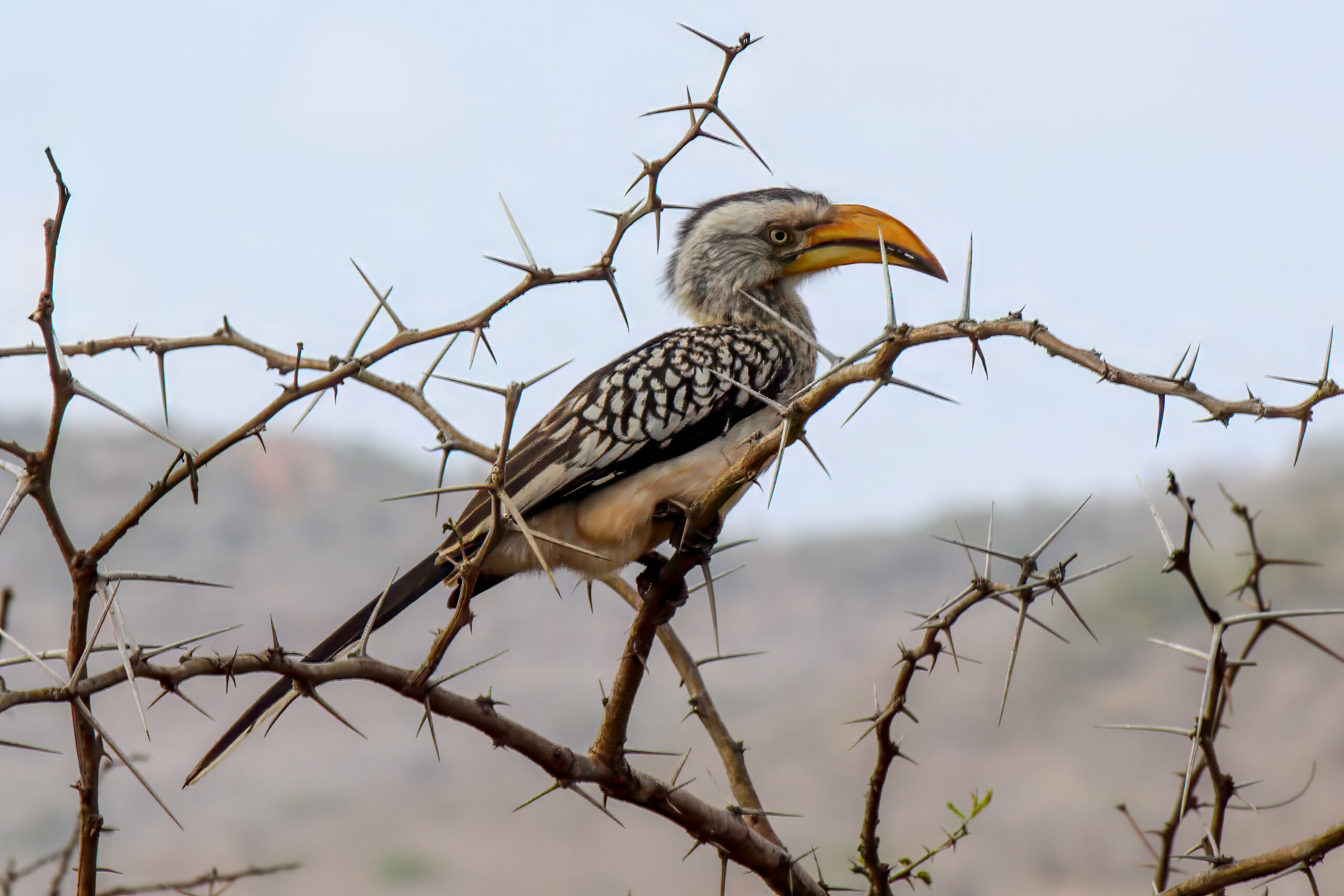Description
The Indian grey hornbill (Ocyceros birostris) is a medium-sized hornbill, primarily found across the Indian subcontinent. It reaches a length of about 60 cm (24 in), which includes the long tail. This bird is easily identifiable by its grey feathers, and a distinct curved beak in both males and females, with males showcasing a larger casque. The female has a paler beak, being dark only towards the base, compared to the male who has dark coloration extending further towards the tip. Juveniles have a smaller casque and orange skin around the eyes. These hornbills are often seen in pairs.
Diet & habitat
Indian grey hornbills can be found in a variety of habitats including scrub, open deciduous forests, and urban areas, especially near cultivated lands and orchards. They are among the few hornbills that thrive close to human habitation. These are omnivorous birds, feeding mainly on fruits, small mammals, birds, insects, and caterpillars. Their feeding behavior includes the ability to catch flying insects in mid-air and foraging for fruits and other prey in tree canopies. They are known to play a crucial role in forest ecology as seed dispersers.
Nesting
The breeding season for the Indian grey hornbill typically spans from February to May. During this time, they engage in unique nesting behaviors where the female seals herself inside a tree cavity using mud and droppings, leaving only a small slit through which the male feeds her during incubation. This peculiar behavior ensures the safety of the eggs and the female during the vulnerable nesting period. Incubation lasts about 28-30 days, followed by another 45 days for the fledglings to mature enough to leave the nest.
Status
The Indian grey hornbill is currently listed as least concern on the IUCN Red List. This status is due to its wide range and large population that is believed to be stable, despite some threats of habitat loss. Conservation efforts and the bird’s adaptability to urban environments have helped maintain stable population levels.









